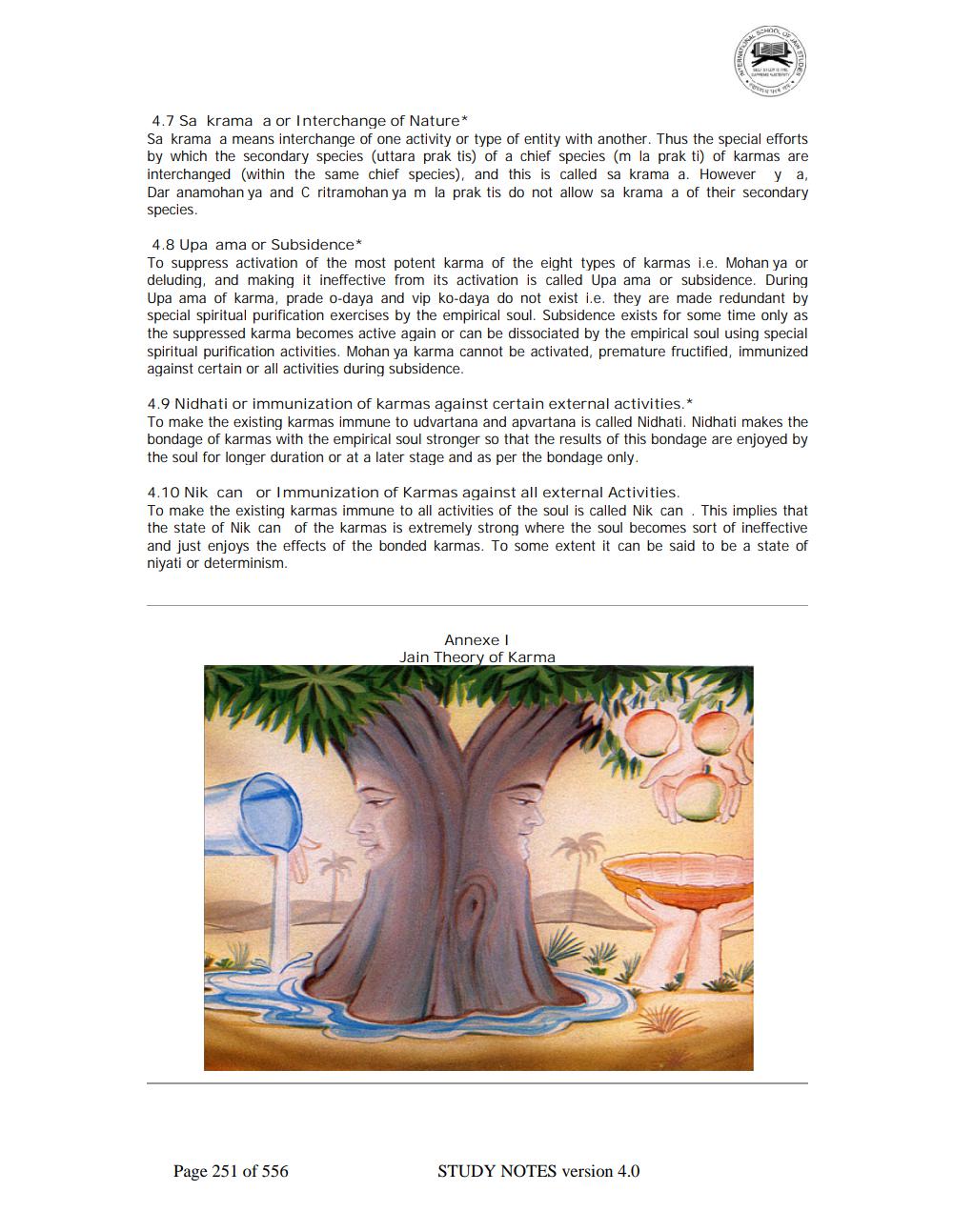________________
4.7 Sa krama a or Interchange of Nature* Sa krama a means interchange of one activity or type of entity with another. Thus the special efforts by which the secondary species (uttara prak tis) of a chief species (m la prakti) of karmas are interchanged (within the same chief species), and this is called sa krama a. Howevery a, Dar anamohan ya and C ritramohan ya m la praktis do not allow sa krama a of their secondary species.
4.8 Upa ama or Subsidence* To suppress activation of the most potent karma of the eight types of karmas i.e. Mohan ya or deluding, and making it ineffective from its activation is called Upa ama or subsidence. During Upa ama of karma, prade o-daya and vip ko-daya do not exist i.e. they are made redundant by special spiritual purification exercises by the empirical soul. Subsidence exists for some time only as the suppressed karma becomes active again or can be dissociated by the empirical soul using special spiritual purification activities. Mohan ya karma cannot be activated, premature fructified, immunized against certain or all activities during subsidence.
4.9 Nidhati or immunization of karmas against certain external activities.* To make the existing karmas immune to udvartana and apvartana is called Nidhati. Nidhati makes the bondage of karmas with the empirical soul stronger so that the results of this bondage are enjoyed by the soul for longer duration or at a later stage and as per the bondage only.
4.10 Nik can or Immunization of Karmas against all external Activities To make the existing karmas immune to all activities of the soul is called Nik can. This implies that the state of Nik can of the karmas is extremely strong where the soul becomes sort of ineffective and just enjoys the effects of the bonded karmas. To some extent it can be said to be a state of niyati or determinism.
Annexe 1 Jain Theory of Karma
Page 251 of 556
STUDY NOTES version 4.0




